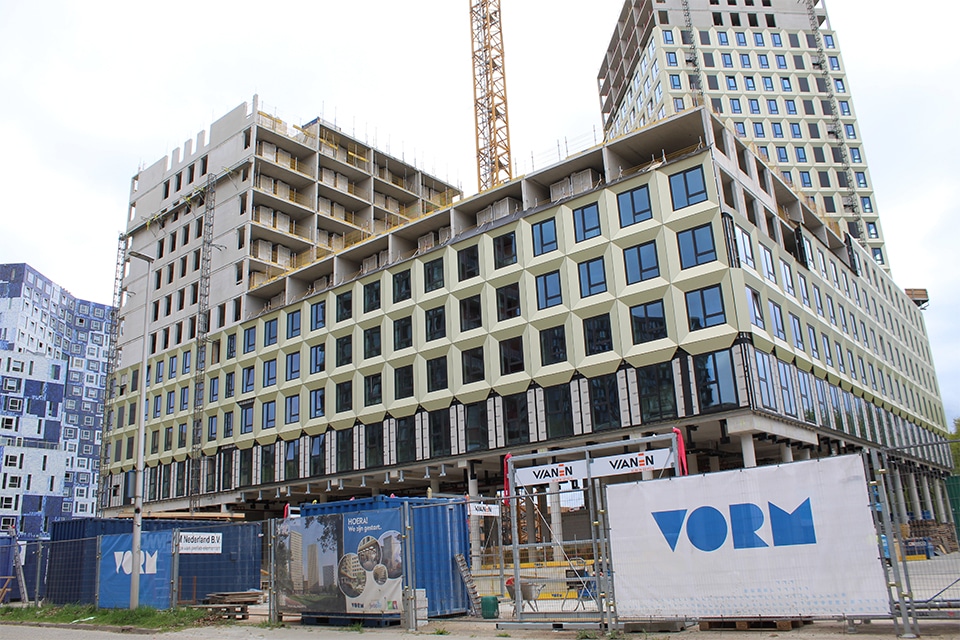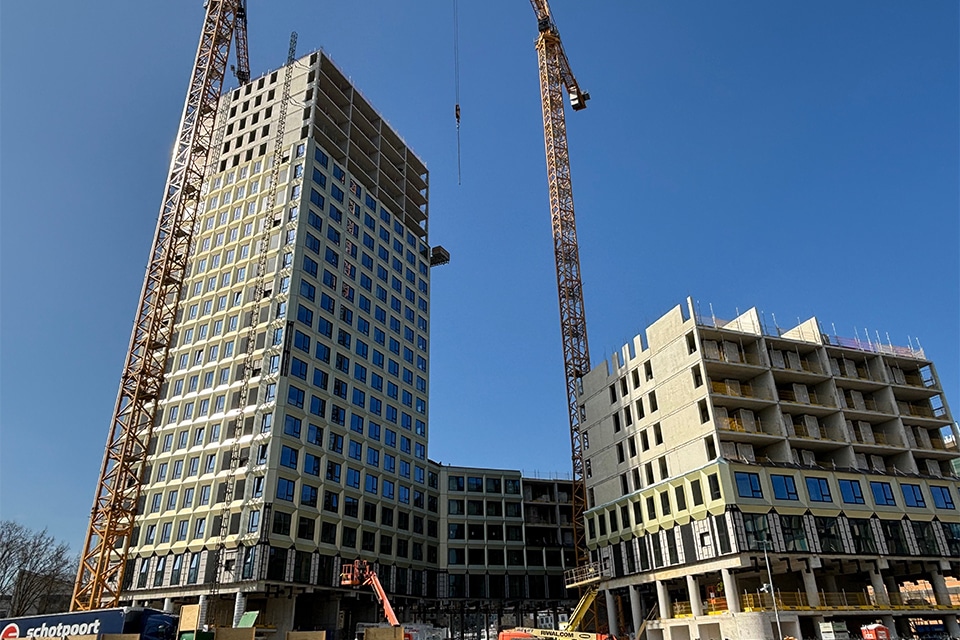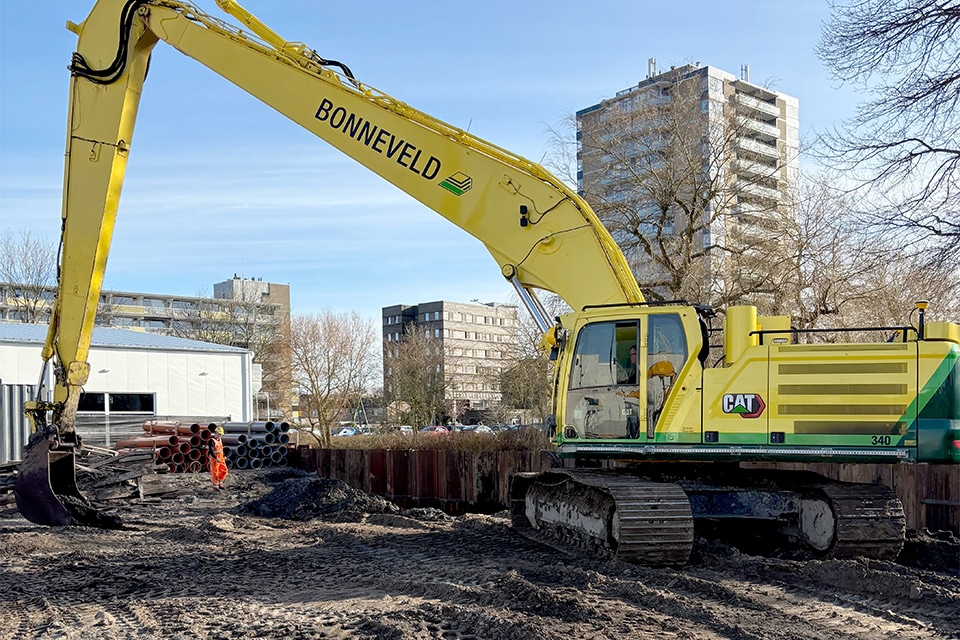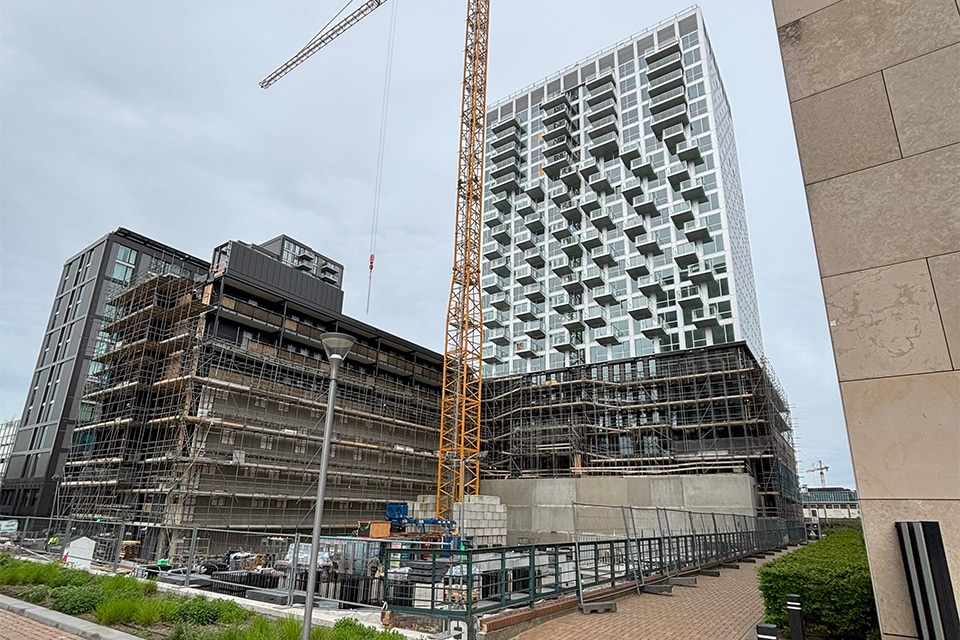
From demolition objects to donor buildings: Real estate as a source of building materials
According to Michel Baars, successful sustainability is only possible if you have a good business model. His New Horizon initiative (now part of the 35-strong Janssen de Jong Group) sees a demolition building as a valuable warehouse full of usable materials. The slogan "We don't demolish, we reap" has now become a catchphrase in the building industry in the Netherlands. "We take building products out of buildings and reuse them, with as little loss of value as possible. In doing so, we save enormously on the use of raw materials."
New Horizon puts the circular economy into practice. Founder and director Michel Baars: "In the past, buildings were not made with the thought of taking them apart again. Instead, we develop innovative techniques and processes to make as many materials and raw materials as possible usable from those buildings (upcycling; ed.)." Sometimes the materials can be used directly in another building, sometimes they have to be ground up to make them into reusable building materials. "Brick or concrete can be ground up and produced again, a door that is no longer adequate you apply in renovations or reduce to wood. That then means no new tree has to be cut down."
Demonstrable impact
This makes every building a donor building and Urban Mining always more effective than traditional demolition, Baars said. Like De Nederlandsche Bank's Satellite. Dismantling this prefabricated office tower, part of DNB's downtown Amsterdam complex, was a godsend for New Horizon. "At the time, the concrete columns, stairs and facade slabs were assembled on site like Meccano. That makes it easier to dismantle." Traditional demolition would not be possible in this case, according to Baars. "The risk of damage to the buildings around it is enormous. In addition, demolition causes a lot of inconvenience and you lose a lot of value - in money, energy and CO2-emissions."
"Impact is only achieved when the harvested building elements are applied elsewhere," Baars continued. That's where the profit lies. "We demonstrably guarantee that on all our projects. This sets us apart from other parties: we demonstrate what it actually delivers for the client."
Circular construction is becoming more data-driven, Baars says. "We start as a demolition contractor, calculate the environmental impact and then are suppliers of the harvested materials. This is substantially different from the traditional demolition chain. The price of circular building products may still be slightly higher than traditional ones, but with today's rising material prices, that will soon change."
Regular partners
More important than price is the current availability of traditionally produced building materials. "It regularly happens that a construction project has to be stopped because the material is not available. For that problem too, Urban Mining offers a structural solution." Partners of New Horizon have the same circular mission. They go public as Urban Mining Collective (UMC). The collective includes wholesalers Stiho, Rexel and Elektroned, plasterboard manufacturer Knauf, Hydro, Unilin, plastic pipe system manufacturer Wavin, roof tile and brick manufacturer Wienerberger and GWW company Rutte Groep.
New Horizon leads the way within the collective with regard to raw material flows and bringing them to market. Baars reiterates the importance of collaboration in circular pathways. "With our partners, we extract value from harvested materials. Clients then reuse these materials in other projects. The contractor who eventually processes the products has no disadvantage from the Urban Mining method. And in the end, if no more buildings are demolished in the traditional way, I have achieved my goal."



